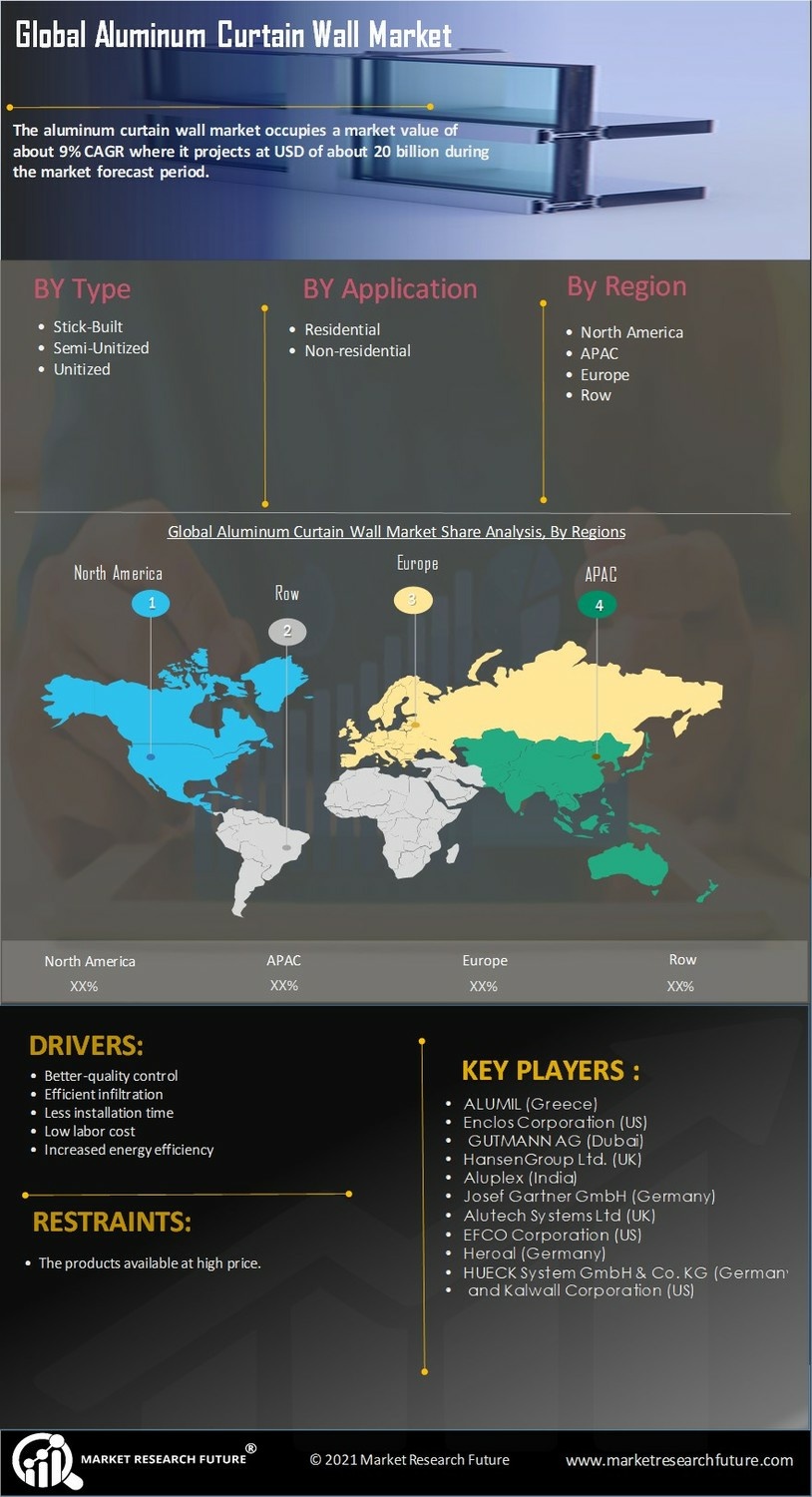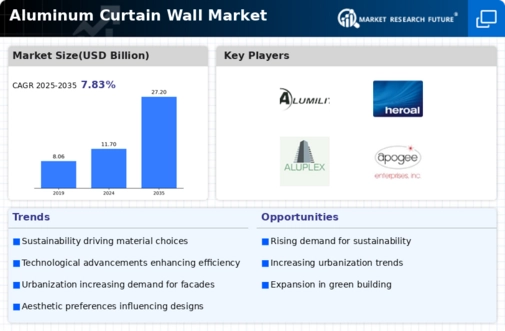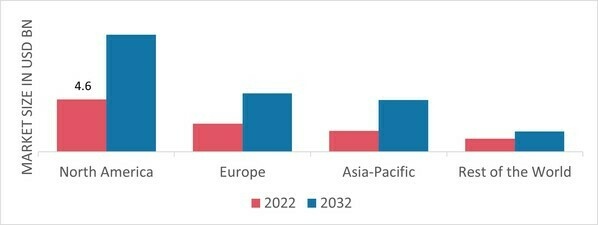Market Growth Projections
The Global Aluminum Curtain Wall Market Industry is projected to experience substantial growth in the coming years. With a market value expected to reach 11.7 USD Billion in 2024 and further expand to 27.2 USD Billion by 2035, the industry is poised for significant expansion. The anticipated CAGR of 8.0% from 2025 to 2035 indicates a robust demand trajectory, driven by urbanization, sustainability trends, and technological advancements. This growth reflects the increasing adoption of aluminum curtain walls in various construction projects, highlighting their importance in contemporary architectural practices.
Sustainability and Energy Efficiency
Sustainability concerns are becoming paramount in construction, influencing the Global Aluminum Curtain Wall Market Industry. Aluminum curtain walls are increasingly favored for their energy-efficient properties, which contribute to reduced energy consumption in buildings. The use of thermal insulation and reflective coatings in these systems can lead to significant energy savings, appealing to environmentally conscious developers and consumers. As governments worldwide implement stricter building codes and sustainability standards, the demand for aluminum curtain walls is likely to rise. This shift is projected to propel the market to a value of 27.2 USD Billion by 2035, reflecting a growing commitment to sustainable building practices.
Government Initiatives and Regulations
Government initiatives promoting energy-efficient building practices are playing a crucial role in shaping the Global Aluminum Curtain Wall Market Industry. Many countries are implementing regulations that encourage the use of sustainable materials and energy-saving technologies in construction. These policies often include incentives for developers who utilize aluminum curtain walls, which are recognized for their energy efficiency and durability. As a result, the market is likely to experience robust growth, supported by favorable regulatory environments. This trend aligns with the broader global movement towards sustainable development, further solidifying the position of aluminum curtain walls in modern construction.
Technological Advancements in Manufacturing
Technological innovations in the manufacturing processes of aluminum curtain walls are enhancing product quality and performance, thereby influencing the Global Aluminum Curtain Wall Market Industry. Advanced fabrication techniques, such as automated production lines and precision engineering, are enabling manufacturers to produce lightweight yet durable curtain wall systems. These advancements not only improve structural integrity but also reduce production costs, making aluminum curtain walls more accessible to a broader range of projects. As a result, the market is poised for growth, with a projected CAGR of 8.0% from 2025 to 2035, driven by the increasing adoption of these technologies in construction.
Urbanization and Infrastructure Development
The rapid pace of urbanization globally drives the demand for the Global Aluminum Curtain Wall Market Industry. As cities expand, there is an increasing need for modern architectural solutions that enhance aesthetic appeal while providing energy efficiency. For instance, in regions like Asia-Pacific, urban centers are witnessing a construction boom, with investments in high-rise buildings and commercial complexes. This trend is expected to contribute significantly to the market, with projections indicating a market value of 11.7 USD Billion in 2024. The integration of aluminum curtain walls in these developments not only meets functional requirements but also aligns with contemporary design trends.
Rising Demand for Aesthetic Architectural Solutions
The growing emphasis on aesthetic appeal in architectural design is a significant driver for the Global Aluminum Curtain Wall Market Industry. Architects and builders are increasingly incorporating aluminum curtain walls into their designs to create visually striking facades that enhance the overall appearance of buildings. This trend is particularly evident in commercial and institutional projects, where the desire for modern, sleek designs is paramount. The versatility of aluminum allows for various finishes and styles, catering to diverse architectural visions. As the demand for innovative and attractive building designs continues to rise, the market is expected to flourish, reflecting changing consumer preferences.






